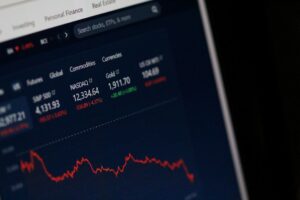The U.S. dollar held near its weakest levels in over two years on Wednesday, as dovish commentary from Federal Reserve Chair Jerome Powell and concerns over ballooning government debt continued to weigh on the greenback.
Dollar Wobbles Against Majors
-
The dollar index hovered around 96.74, not far from Tuesday’s low of 96.37—its weakest since February 2022.
-
The greenback traded near its lowest point since September 2021 against the euro.
-
Against the Swiss franc, the dollar was pinned close to levels not seen since January 2015.
These lows reflect a deep shift in market sentiment driven by U.S. fiscal risks and the Fed’s tone shift.
Powell’s Comments Add Pressure
At the ECB Forum in Sintra, Powell reiterated a “patient approach” to rate cuts. While he didn’t commit to a July move, he said decisions would be data-dependent—placing more weight on Thursday’s nonfarm payrolls and other incoming economic signals.
“We’re waiting to see clearer signs that inflation is moving sustainably down,” Powell said.
However, labor market strength shown in the JOLTS report added modest short-term support for the dollar.
Trump’s $3.3 Trillion Spending Bill in Focus
President Donald Trump’s controversial tax-and-spending megabill, recently passed by the Senate, could add $3.3 trillion to national debt over the next decade. Markets are concerned that this fiscal expansion could worsen Treasury supply and undermine confidence in the dollar.
“It’s an increase in issuance, an increase in government spending well beyond its means,” noted Rodrigo Catril, strategist at NAB.
Investors await the House vote for final approval ahead of Trump’s self-imposed July 4 signing deadline.
Monitor USD Trends and Macroeconomic Triggers
To stay ahead of currency volatility and rate expectations, investors can leverage:
📊 Economics Calendar API
Track key data releases like nonfarm payrolls, inflation reports, and rate decisions that directly affect dollar strength.
Final Thoughts
The U.S. dollar remains on fragile footing, caught between a dovish Fed, ballooning debt, and heightened political uncertainty. With the nonfarm payrolls looming and Trump’s fiscal strategy under scrutiny, volatility is set to persist through July.




